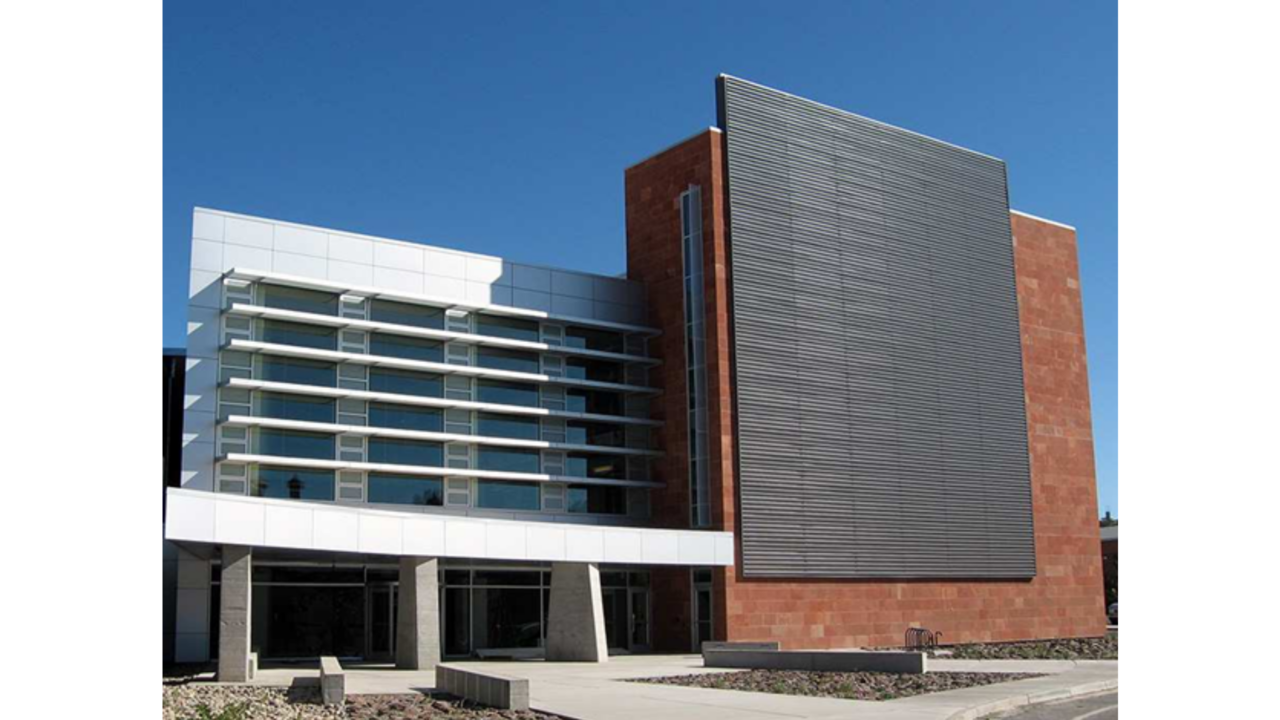Solar Walls

Image courtesy of SolarWall.com
You know how I love smart and low-tech green building solutions, and the Solar Wall is definitely up there in terms of benefit. It can easily pay for itself in a few short years and offers long term reduced heating costs by simply using the sun’s energy to heat incoming air in cold climates. It is nearly passive, with low-tech requirements. All you need is a sunny wall on a building, and the ability to integrate it with the heating and ventilation system.
How do they work?
The external portion of the solar wall consists of a metal cladding that is mounted on the exterior wall of the building, leaving a few inches of space in between the building and the metal cladding. The perforated metal solar cladding is fixed to the wall, creating a cavity between the two walls. It is in this cavity that the heating occurs.
Air between the building’s exterior wall and the metal cladding warms up when the sun hits it and this warm air naturally rises to the top of the wall due to convection currents. It is here at the top of the wall that we can make use of the warmed air. This air is taken into the building’s heating and ventilation system in the heating months.
By having pre-heated air come into the building, you can dramatically reduce the amount of energy required to heat the building, while still providing fresh outside air, even in very cold climates. There are examples of air being warmed over 20 degrees Celsius from the bottom of the solar wall to the top, even in extreme cold.
Aspects to consider
Solar walls are a huge potential benefit in any climate that has significant heating requirements, and they make a lot of sense, even in remote locations as they are passive systems, with no moving parts other than that of the HVAC (heating ventilation and air conditioning) system. This makes maintenance particularly attractive in any situation, but especially in remote regions.
Keep in mind that solar walls require large walls that have direct sun exposure to work. This means that they are generally not used in single-family residential applications, but they can be used in multi-family condominiums and apartment blocks, and they make a lot of sense for large industrial, agricultural and institutional buildings. Check out the case studies on the SolarWall company’s website.
What are the benefits?
Reduced heating costs are definitely one of the main benefits of a solar wall. This also comes with a reduced Carbon footprint as it offsets the fossil fuel heating sources with low tech solar. While there is an initial investment in the purchase and installation of the solar wall, the payback period can be quite short depending on your heating needs and fuel source.
Of course, a metal wall also has an environmental impact from the mining, smelting and manufacturing process. However, the solar wall has an extremely long lifespan, and at the end of its useful life it can be recycled!
The lack of moving parts and low maintenance requirements make the solar wall one of my favourite technologies. Because it is based on natural principles of thermodynamics and is a simple system, I think that they have great benefits that should be explored in locations that have high heating requirements (hello Canada, arctic regions, Nordic Europe, etc.)
The look
While there are some constraints on the appearance of the solar wall, the colour needs to be sufficiently dark to optimize solar gain, there are many attractive designs that already make use of metal sheeting. So, adding the feature of free pre-heating incoming air just makes sense!
Solar walls can be used in the original building design, or they can be added later to a wall that suits the requirements. So, keep this in mind when you are at the table to design or retrofit a building! Just remember that a solar wall must also be integrated into the HVAC system, so the connection point is also a consideration and may add costs to any retrofit.
So, there you have it, another cool green building technology that I love. You can find more information on Green Building technologies on my podcast. Listen to Episode 26 for my Top 10 Green Building Technologies for your Home.
And, I have a great article on passive solar design that you will find interesting if you are also into this Green Building stuff like I am! See what green building technologies you can benefit from, and feel free to get in touch with me about what you would like to see more of here in the Flourishing Community!
Stay connected with news and updates!
Join my mailing list to receive the latest news and updates. Your information will not be shared.

